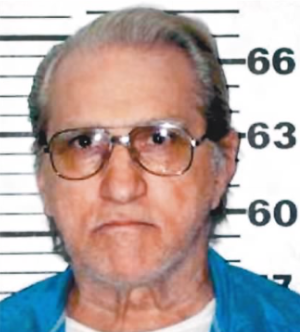
b: 1942
Richard Steeves
Summary
Name:
Richard SteevesYears Active:
1965 - 1985Birth:
January 31, 1942Status:
ImprisonedClass:
Serial KillerVictims:
6Method:
BludgeoningNationality:
USA
b: 1942
Richard Steeves
Summary: Serial Killer
Name:
Richard SteevesStatus:
ImprisonedVictims:
6Method:
BludgeoningNationality:
USABirth:
January 31, 1942Years Active:
1965 - 1985bio
Richard E. Steeves was born on February 1, 1942, in Waterville, Maine. At the age of five, his father took his own life, and shortly afterward, his mother placed him in an orphanage. Steeves has attributed his violent tendencies to the sexual abuse he suffered during his childhood. He left school in the eighth grade and began engaging in minor criminal activities, which led to his placement in a reformatory. As he grew older, his criminal behavior persisted, resulting in frequent incarcerations. While in prison, Steeves often made threats against the guards and fellow inmates. His last release from prison was in 1965.
murder story
On June 13, 1965, five months after his release, Steeves attacked 83-year-old Harry Staples in Augusta, Maine. Using Staples' own cane, Steeves beat him severely. Steeves fled the scene, leaving Staples clinging to life. Staples was rushed to the hospital, where he spent two weeks in intensive care before succumbing to his injuries. Despite an extensive investigation, Steeves evaded capture.
On June 19, Steeves broke into the home of 70-year-old Ralph Mace in rural Rochester, New Hampshire. Armed with a knife, he stabbed Mace six times and left him for dead. Mace was found alive but later died from his injuries. Two months later, on August 14, Steeves returned to Augusta, Maine, and invaded the cabin of 73-year-old Lorenzo D. Troyer. He brutally beat Troyer with a blunt object before fleeing. Troyer was discovered unconscious by a friend and rushed to the hospital, where he died the next day.
In January 1966, Steeves traveled to Ohio, where his car broke down. He befriended 84-year-old Lewis Gephart and his 35-year-old son Francis in Coshocton. On January 3, Steeves bludgeoned both to death, stole their car, and drove back to New Hampshire.
Steeves was eventually arrested in New Hampshire, where he was found driving the stolen car. He was charged with the murders in Ohio and New Hampshire but not initially for the killings in Maine. During his trial in New Hampshire, Steeves pleaded not guilty by reason of insanity. The New Hampshire Supreme Court halted the trial, automatically acquitting him on insanity grounds, and Steeves was sent to Concord Mental Hospital. In 1971, he requested extradition to Ohio for a speedy trial. On December 14th of that same year he got his wish, but 6 months later, after extensive psychiatric evaluation, he was returned to New Hampshire.
By 1980, medical professionals declared Steeves no longer a threat, allowing him to leave the hospital grounds unescorted. In 1983, Ohio decided not to prosecute him for the murders. Instead, Steeves agreed to serve 3 to 7 years in prison.
In 1984, Steeves was paroled and sent to live with his brother in Unity, Maine. In April 1985, he broke into the mobile home of 69-year-old Russell F. Bailey in Wells, striking him multiple times in the head with a blunt instrument, likely a club. Bailey's body was discovered by a relative on April 29. Witnesses reported seeing Steeves' pickup truck at Bailey's home on the day of the murder.
Steeves was interviewed by reporter Robert Hohler and gave conflicting statements about Bailey's murder. He claimed Bailey had loaned him money for sexual favors and someone else had killed him, but also mentioned a dream-like memory of committing the murder. Steeves was charged with Bailey's murder and the 1965 murder of Harry Staples. While awaiting trial, he was moved to Maine State Prison for his protection after two suicide attempts.
During his trial, Steeves did not use an insanity defense or testify. His lawyer argued that Steeves was innocent and framed by the real killer. Nevertheless, Steeves was found guilty and sentenced to life imprisonment.
In 1987, Steeves' attorney sought a new trial, arguing that inadmissible testimony could have contradicted another suspect’s denials and that there was insufficient evidence for the guilty verdict. In 2017, Steeves claimed he felt rehabilitated and safe enough to be released, but he remains imprisoned at Maine State Prison, where he has been diagnosed with Parkinson's disease.